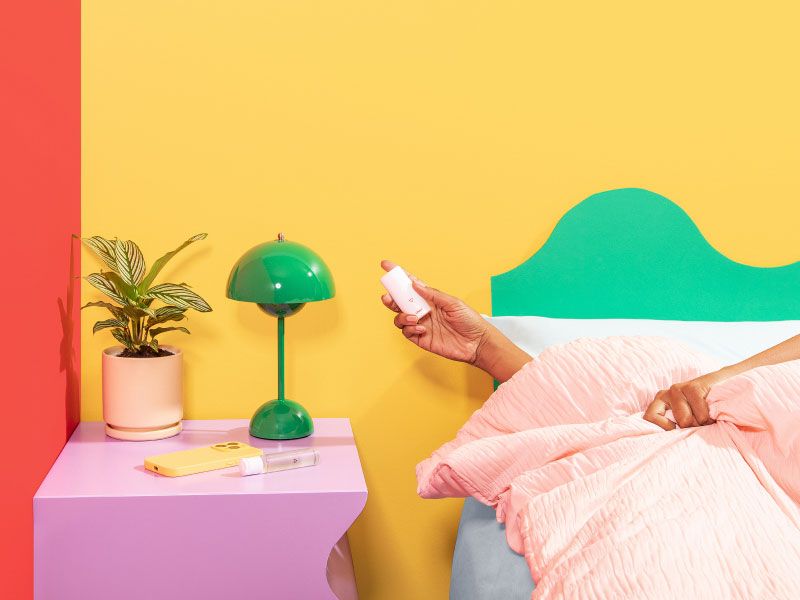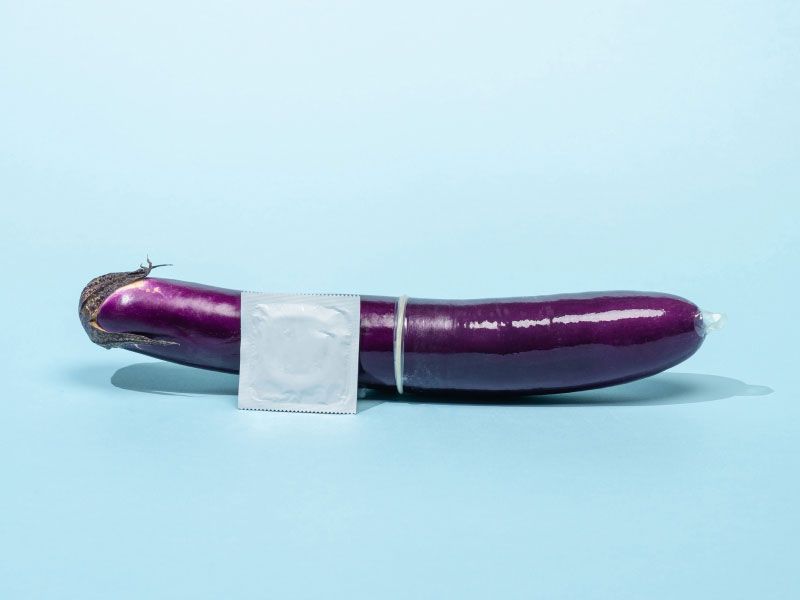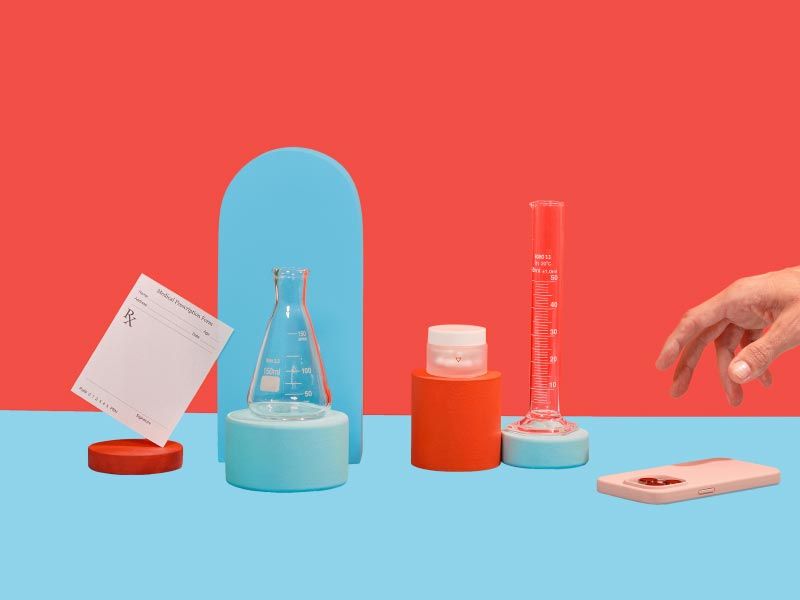
Can You Test for STDs at Home?
Published on May 10, 2024
Updated on May 22, 2025
Written by Kathleen Morrison
Medically Reviewed by Andrea Sleeth WHNP-BC, MSCP
Short answer: yes—and it’s way easier than you might think.
Whether you're feeling a little anxious, super curious, or just doing a regular check-in (go you), at-home STI testing is a low-stress, no-shame option that puts you in charge. It’s discreet, straightforward, and you can do it from the comfort of your couch—sweatpants very much encouraged.
If the idea of testing has ever felt intimidating or overwhelming, you’re not alone. But the good news? It doesn’t have to be. These days, you’ve got options that are clear, convenient, and genuinely empowering.
STD Testing 101
Okay, so you’re thinking about getting tested—but the idea of booking an appointment, sitting in a waiting room, or having an awkward convo with a doctor just isn’t it right now. That’s fine. This is where at-home STD testing comes in (thank you, 2025).
Here’s how it works: you order an STD test kit online, it shows up at your door (super discreetly), and you follow the simple instructions to collect your sample—think swab, blood prick, or pee-in-a-cup, depending on the test.
Then you pop it back in the mail using the prepaid packaging, and boom—your results are delivered online a few days later, no doctor's office required.
These kits can screen for a few of the usual suspects—chlamydia, gonorrhea, HIV, and more. And the best part? You get to handle it all on your time, in your space, without the stress or side-eyes.
Why do folks go for at-home testing?
- It’s convenient: no time off work, no waiting rooms, no stress
- It’s private: your business and yours alone
- It’s empowering: you’re taking your health into your own hands!
- It’s judgment-free: because testing isn’t something you should feel weird about
We know it can feel intimidating at first, but getting tested doesn’t have to be a Big Deal. It’s just one more way to show up for yourself (and your partners), with zero shame and a whole lot of clarity.
How it works
Alright, you’re curious, you're ready, and you want the full lowdown—so let’s talk about how this whole at-home STD testing thing actually goes down.
Step one? You buy or order your kit online. Some tests check for one specific infection, others scan for a more comprehensive lineup (we’re talking chlamydia, gonorrhea, HIV, syphilis, and more). You choose the test that fits your situation, and then you can get started.
From there, it’s all you—on your terms, in your space. Depending on the test, you might do a quick finger prick (don’t worry, you’ve definitely done worse), pee in a cup, or use a swab (throat, vaginal, or rectal) to collect a sample. The kit walks you through everything, step by step. No med degree required.
Once you’ve done the sample thing, you wait. If you’ve ordered a mail-in kit, you just seal it up, pop it back in the mail using the prepaid packaging, and then chill. The lab does its thing, and within a few days, your STD test results are ready to view in a secure online portal.
And if something pops up? It’s okay, and you’re not alone. Your next steps will be to meet with a provider so you can start prescription treatment, if you’re medically eligible, for whatever’s going on, so you can start feeling better ASAP.
Some results—like testing positive for HIV—may require you to visit an in-person provider, too. As much as we love comfort, not everything should be handled from the couch, and you may need some additional support.
Who should get an STD test?
Some STIs can cause itching and pain in your genital area, butt, or throat, but many times infections happen with no symptoms at all. If you think you’ve been exposed to an STI, the best thing to do is get tested!
So, should you get tested for STDs? Here’s what the CDC has to say:
- All sexually active people between the ages of 13 and 64: Test for HIV at least once in your lifetime
- Sexually active women under age 25: Test for gonorrhea and chlamydia once a year
- Sexually active women over age 25: Test for gonorrhea and chlamydia once a year if you’ve had a new partner, multiple partners, or a partner with an STI
- Pregnant people: Test for syphilis, HIV, hepatitis B, and hepatitis C early in pregnancy, and test for chlamydia and gonorrhea if you’re at risk of infection
- Sexually active gay men, bisexual men, or other men who have sex with men: Test for HIV, syphilis, chlamydia, and gonorrhea every year or every three to six months if you’ve had multiple partners
- People with risk factors for HIV: Test for HIV at least once a year if you have sex without a condom or a dental dam, or if you share needles to inject drugs
Which STDs can you check for at home?
Let’s talk about what you can check for from the comfort of your couch (or bed—we’re not judging). At-home STD tests are a super easy way to stay in the know about your sexual health, but the exact infections you can screen for will depend on the test you choose.
Most kits cover the usual suspects, including:
- Chlamydia and gonorrhea: Two of the most common sexually transmitted infections out there. These often come with zero symptoms, so regular testing for chlamydia and gonorrhea is a great way to stay clued in. You’ll typically use a urine sample or vaginal, rectal, or throat swab for these.
- HIV: At-home HIV tests usually involve a finger-prick blood sample. They check for HIV antibodies—basically, what your body produces in response to the virus.
- Trichomoniasis (Trich): Another super common (and often silent) infection that can be tested for at home with a urine sample or vaginal swab.
Types of at-home STD tests
Not all STDs show up the same way—or at all—so different infections call for different kinds of tests. The good news? There’s a kit out there for pretty much everything, and many test for multiple infections at once (because we love a multitasker).
Here’s a quick rundown of what’s out there:
- Combo kits: These test for several common STDs at the same time—think chlamydia, gonorrhea, trich, HIV, and syphilis in one go. Super handy if you’re looking for a full check-in.
- Single infection kits: Want to test for just one thing? Whether you’re checking for herpes, HIV, or something else specific, single tests are available too.
- Oral and rectal testing: Some STDs don’t always show up in vaginal samples, especially if you’ve had oral or anal sex. These tests usually include throat or rectal swabs so you can test all the right places.
- HIV rapid tests: These are the only FDA-approved STD tests that give results in minutes. You’ll do a quick finger prick at home and see your result right then and there—no mail-in required.
Every test is a little different, so always check the kit info to make sure it’s right for you. And remember: no matter what you're testing for, you deserve care that's respectful, easy, and designed with your body in mind.
How accurate are at-home STD tests?
Let’s be real—if you’re going to swab, pee in a cup, or prick your finger, you want to know the results are actually worth something. Totally fair. So here’s the lowdown on how accurate at-home STD tests are (spoiler: pretty darn good when you do them right).
Here’s what makes a difference when it comes to accuracy:
How you collect your sample matters. Follow those instructions like it’s a recipe from someone you trust with your life. If your sample gets contaminated or isn’t collected properly, it could mess with your results. Take your time, double-check the steps, and you’re golden.
Timing is everything. Don’t hold off testing! If you’re worried you may have been exposed or you’re showing symptoms, get checked out right away. But keep in mind that your body might not have had enough time to show signs of an infection, potentially leading to a false negative. To be extra sure, get retested 7–14 days after your encounter so you can feel secure.
Quality counts. Not all tests are created equal. Reputable brands will use FDA-cleared tests and a legit certified lab. That means they meet high standards for accuracy, privacy, and reliability.
But how do they compare to in-clinic tests?
When used correctly, at-home tests are very close to what you’d get in a clinic. Clinics might have a slight edge when it comes to sensitivity (aka catching very early or hard-to-spot infections), mostly because the tests are run by pros using super-advanced machines.
But that doesn’t mean at-home tests aren’t legit. With the right brand and timing, you’re getting a super solid snapshot of your sexual health from the comfort of your own home.
Accuracy by STD (a quick + honest rundown)
Chlamydia and gonorrhea: NAATs (the test you'll usually get) are super reliable—think over 90% accurate.
- HIV: Fourth-gen tests (done 4+ weeks after exposure) are crazy accurate—over 99%.
- Syphilis: Blood tests like RPR and VDRL are great at spotting it early; confirm with another test if needed.
- Herpes: Type-specific tests can tell the difference between HSV-1 and HSV-2. Once again, NAATs or PCRs are the VIPs here—super accurate if it’s needed.
Pros and cons of testing at home
At-home STD testing is a super convenient option, but like anything, there are a few pros and cons to consider. Let’s break it down so you can make the best choice for you!
The perks of testing at home
- Convenience: No need to leave your cozy space! With at-home testing, you can complete everything from wherever you’re most comfortable. No clinic visits required.
- Privacy: If talking about your sexual health with a doctor feels a little intimidating or uncomfortable, at-home tests let you keep things low-key and private.
- Accessibility: If you live somewhere where clinics are hard to get to (looking at you, rural areas!), at-home tests bring screenings right to your door. Accessibility for all!
- Easy peasy: Most at-home tests are designed to be super user-friendly. Clear instructions and simple sample collection make it pretty effortless.
The not-so-glam side
- Limited options: At-home tests don’t catch everything. Some STDs might need a trip to a clinic, or you might need more tests if you’ve got specific concerns.
- User error can happen: If the instructions aren’t followed to the letter, there’s a risk of getting inaccurate results. It’s not you, it’s the sample—it needs to be just right.
- Treatment takes a minute: If you do test positive, you’ll still need to see a healthcare provider for prescription treatment. It’s a small extra step, but not a huge deal.
- Cost: Some insurance covers at-home tests, but not all. Depending on your insurance plan, these tests can sometimes be a little pricier than heading to a clinic.
Ultimately, the decision to test at home is totally up to you and your preferences. If you’re leaning in that direction, just make sure you go with a trusted, reliable brand, follow the instructions carefully, and stay on top of your health. You’ve got this!
After your test
So, you did the thing. You took your at-home STD test (go you!) and now you’ve got your results. What’s next?
When your results come in, they’ll usually say one of three things:
- Negative: No signs of the infection were found in your sample. Deep breath. You’re good to go, but you might also want to consider additional testing if you’re still not feeling confident.
- Positive: Your test picked something up. This doesn’t mean you did anything wrong—it just means it’s time to take care of yourself (and maybe your partners). Most STDs are super treatable, and some are totally curable. You’ve got options, and you’re not alone.
- Inconclusive: This one’s a bit meh. It means the lab couldn’t give a clear answer—maybe the sample wasn’t enough, or something went funky during testing. It happens. You’ll likely just need to retest, no biggie.
Now, let’s talk next steps:
If your result is positive, don’t spiral. Seriously. We know those three minutes after reading your result can feel like a lot, but take a breath.
Most STDs are way more common than you think—and getting prescription treatment is usually super straightforward. Many at-home test brands include a free online consultation with a doctor if you test positive. They’ll talk you through what’s next, answer your questions, and get you started on prescription treatment if needed. Easy.
You’ll want to wait until you’ve fully healed before having sex. That helps make sure you and your partners stay healthy—plus, rest is hot.
Speaking of partners: yes, you should let them know. We know it’s awkward, but it’s also part of being a kind, confident, responsible sexual human. And honestly? Most people are way more understanding than you might expect. Just keep it simple and honest: “Hey, I got tested and something came up—you should get checked too.” Boom. Done.
If you're struggling with the fact that you got a positive STD result (it's okay, loads of people do), there's no harm in reaching out to a mental health professional to chat about it. It's all part of the process, and health is multifaceted.
The power of getting tested—on your own terms
At-home STD testing can be a game-changer when it comes to your sexual health. It's all about convenience, discretion, and giving you the tools to take charge of your health in a way that works for you.
While no test is 100% foolproof, at-home tests are a super helpful way to stay on top of things. Used correctly and paired with regular check-ins with your doc, they can help catch things early, keep everyone in the loop, and make sure you and your partners stay healthy and happy.
If you’re ready to take control of your sexual health, Wisp's discreet, easy-to-use at-home STD test kits can help you stay informed and confident about your health, without the hassle. Order yours today and take the first step toward peace of mind.
Frequently Asked Questions (FAQ):
Can you test yourself for an STD at home?
Absolutely! You can totally test yourself for STDs at home with special kits that are available online or in pharmacies. These kits usually ask for a sample, like urine, blood tests, or a swab, which you then send off to a lab for testing. It’s quick, easy, and super private!
How can I tell if I have an STD without going to the doctor?
While certain symptoms like unusual discharge or burning when you pee can be signs of an STD, the only way to really know is by getting tested. If you’re feeling uncertain, at-home STD tests are a super convenient way to get the peace of mind you deserve, without needing to see a doctor in person.
What to do after a positive STD test result
Once you know your results, you can start taking the necessary steps to protect your health, which will often involve chatting to a professional. Getting the right treatment early will help reduce the risk of further health complications—another reason why getting tested is so important.
How accurate are in-home STD tests?
Pretty dang accurate! As long as you follow the instructions carefully and collect your sample correctly, at-home STD tests are usually just as accurate as the ones you’d take at a clinic, because they’re processed in the same certified labs. It’s kind of like taking yourself to the doctor... but without having to put on pants.
Are self-swab STD tests accurate?
Totally. When done right, self-swab tests (whether vaginal, throat, or rectal) are a super effective way to check for STDs. And don’t worry—your test kit will walk you through it step-by-step so you feel confident and comfortable.
This blog post is for informational and educational purposes only and should not be taken as professional advice. Always consult with a qualified professional before making any decisions based on the information provided here.

3 Panel STD Test
New Price, Save 20% | $79.00
Get fast, convenient STD testing for Chlamydia, Gonorrhea, and Trichomoniasis.


